Dictionary of Guitar Terms
Here you will find an alphabetical list of common guitar terms.
Bending: Pushing the string up or down which causes the pitch to go up.
Bridge: An extra piece of wood placed on the guitar that helps to transmit the vibrations of the strings into the guitar’s sound box.
Dolce: A darker, sweeter sound achieved by playing closer to the fingerboard.
Foot Stool: Classical guitarists often use a stool to raise their left foot. This stool aids the guitarist in getting into a good position.
Frets: The metal strips found on the fingerboard. It also refers to the space you would put your left hand finger. For example, the first fret refers to the space between the nut and the first metal fret wire.
Hammer-on: Sharply bringing a left hand finger down on a fret causing the string to make a sound. Also called an ascending slur.
Harmonics (Artificial): Similar to natural harmonics except they can be played anywhere. Use two hands to produce the sound.
Harmonics (Natural): Isolates overtones. Creates a light, pure sound. Easiest places to get natural harmonics are at the 12th, 7th (19th), and 5th(24th) frets.
Legato: Notes are connected with no intervening silence.
Nut: A small piece of hard material that can be found near the head of the guitar. The nut usually has slots that the strings rest on.
Ponticello: A bright sound achieved by playing closer to the bridge.
Pull-Off: The left hand finger “pulls-off” the string in a manner that creates a sound. Also called a descending slur.
Rasgueado: A strumming technique commonly found in Flamenco.
Slur: Playing a melody or motive in a connected way. Usually by using hammer-ons and pull-offs.
Sound Hole: The open hole found on the top of the guitar. It assists (along with the top of the guitar) in projecting sound.
Staccato: Playing a melody or motive in a disconnected way causing a break between notes.
